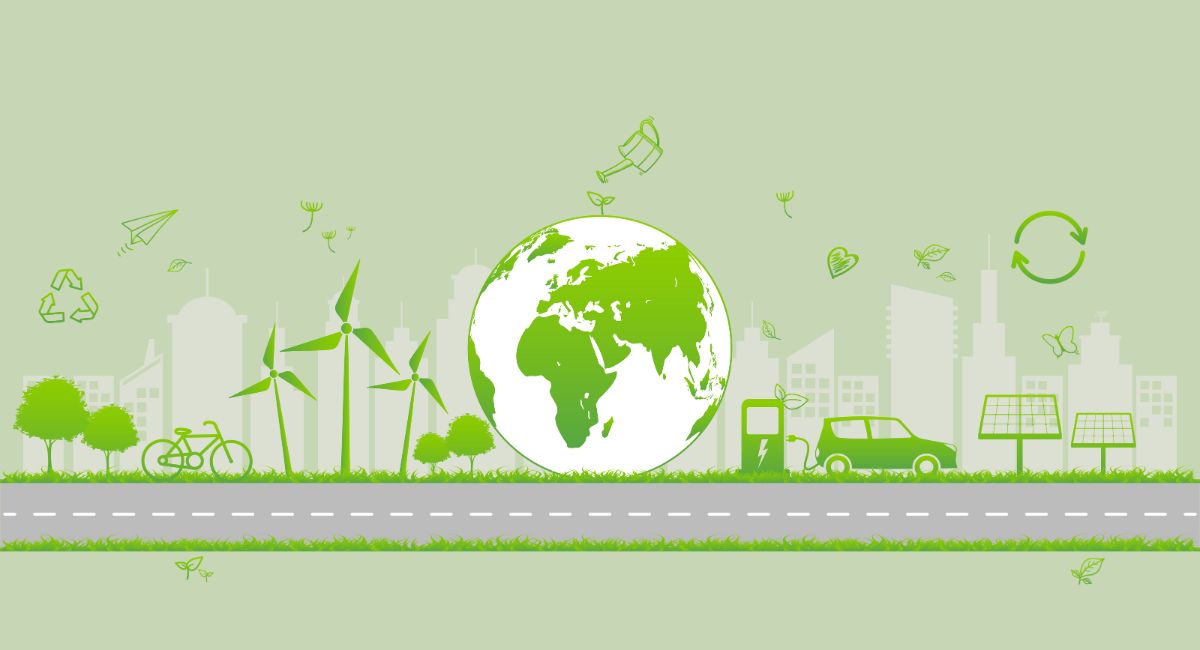25 Sustainable Living Hacks To Supercharge a Green Lifestyle
Living sustainably is not only beneficial for the planet but also for our own well-being. We can contribute to a greener and more sustainable future by making small changes in our everyday habits. This blog post will share 25 sustainable life hacks to help you reduce your environmental footprint and lead a more eco-friendly lifestyle.
Embrace reusable shopping bags.
You’re strolling through your favorite local grocery store, browsing the aisles filled with fresh produce, pantry staples, and tempting treats. As you reach for your shopping list, you confidently pull out your trusty reusable shopping bags, ready to tackle your grocery haul with a sustainable twist. A small action makes a significant impact: embracing reusable shopping bags.
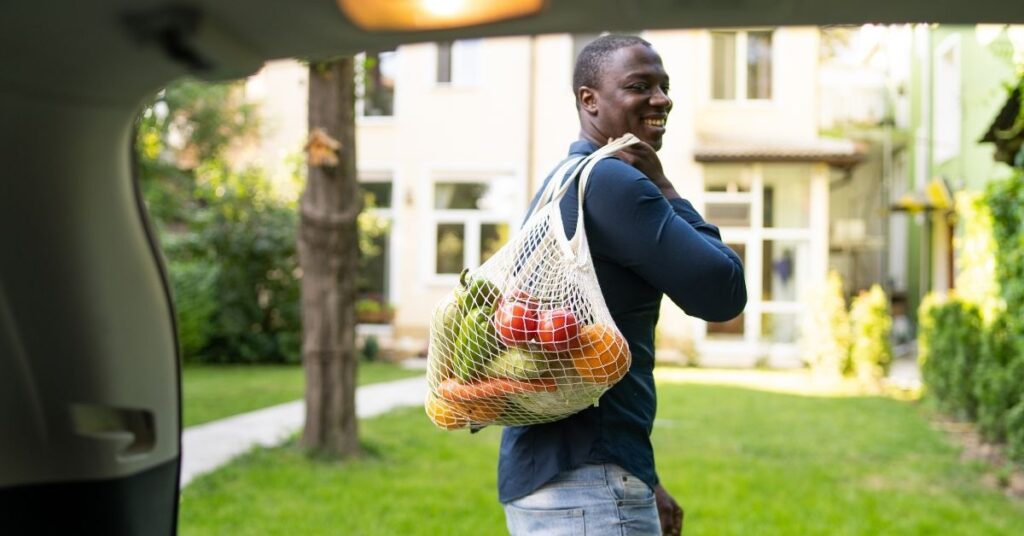
Plastic bags have become synonymous with convenience, but their environmental repercussions are far from convenient. These lightweight carriers take hundreds of years to decompose, clogging up landfills and posing a significant threat to wildlife. By switching to reusable bags, you can help combat this plastic waste crisis and create a ripple effect of change.
Think about it. Whenever you head to the store with your reusable bags, you say a resounding “no” to single-use plastics. Not only are you reducing the amount of plastic waste generated, but you’re also saving resources and energy that go into producing and disposing of these bags. It’s a win-win situation for both you and the planet.
Suppose you’re planning a trip to the local farmers market to stock up on fresh fruits and vegetables. Instead of relying on the plastic bags typically provided by vendors, you bring your own sturdy, reusable produce bags. These bags prevent bruising and damage to your delicate produce and eliminate the need for flimsy plastic bags that often end up discarded after a single use. Your reusable bags become your trusted companions, accommodating your purchases time and time again.
But it doesn’t stop there. Reusable bags aren’t limited to just grocery shopping. They come in all shapes and sizes, perfect for any occasion. Heading to the library? Tote your books in a reusable canvas bag. Hitting the gym? Grab a stylish reusable gym bag to carry your workout gear. Even when you’re out and about, a compact foldable bag can easily fit in your purse or pocket, ready to tackle impromptu shopping trips or unexpected finds.
It’s important to remember that embracing reusable shopping bags is not just a personal choice; it’s a collective movement towards a more sustainable future. Imagine the impact we can make if everyone at the store, the mall, or the local market chose to use reusable bags. The reduction in plastic waste would be astounding.
So, the next time you head out for a shopping expedition, make it a habit to grab your trusty reusable bags. Take pride in being part of the solution and inspire others to follow suit. By carrying reusable shopping bags, you become an advocate for a greener world, one grocery trip at a time.

Opt for a reusable water bottle.
Let’s discuss one of the simplest yet most impactful sustainable life hacks: opting for a reusable water bottle. It’s time to ditch those single-use plastic bottles and embrace a more eco-friendly way to quench our thirst.
Consider this: Every year, billions of plastic water bottles end up in landfills or littering our oceans and landscapes. The environmental consequences are staggering, from the depletion of natural resources used in production to the harmful effects on marine life. It’s a problem that demands our attention and action.
By consciously choosing to use a reusable water bottle, you reduce plastic waste and conserve resources and energy. It’s a small step that can profoundly impact our environment and future generations.
Imagine you’re heading out for a hike on a sunny day. Instead of reaching for a single-use plastic water bottle, you grab your sleek stainless steel or BPA-free plastic reusable water bottle. It’s durable, easy to clean, and can be refilled countless times. Plus, it keeps your water cool and refreshing throughout your adventure. With each sip, you stay hydrated and actively reduce the demand for disposable plastic bottles.
But the benefits of a reusable water bottle go beyond environmental impact. Think about the financial savings too. Buying bottled water can add up over time, especially when you’re constantly on the go. Investing in a reusable water bottle lets you be kind to the planet and your wallet.
If you’re a busy professional who’s always on the move. Instead of buying bottled water daily, you fill your reusable bottle with filtered water from your home or office. Not only do you save money, but you also have the convenience of having water readily available whenever you need it. Whether in meetings, at the gym, or commuting your trusty reusable water bottle is always by your side.
You may be wondering about water availability when you’re on the go. Fear not! Many establishments, from coffee shops to airports, now have water refill stations or fountains to cater to the growing demand for sustainable alternatives. You can also find apps or websites that map out public water fountains in your area, ensuring you always have hydration options.
By choosing a reusable water bottle, you’re making a statement. You’re saying no to the unnecessary waste created by single-use plastic bottles. You’re taking a stand for a cleaner, greener future. And guess what? Your actions can inspire others to follow suit.
Imagine a world where everyone carries a reusable water bottle, where plastic bottle waste becomes a thing of the past. It may seem daunting, but change starts with small steps. And opting for a reusable water bottle is a powerful and practical step we can all take.
So, the next time you leave the house, make it a habit to grab your reusable water bottle. Stay hydrated while reducing your ecological footprint. It’s a simple choice with profound implications. Let’s raise our reusable water bottles and toast a sustainable, hydrated future together.

Say no to plastic straws.
It’s time to tackle a tiny but mighty contributor to plastic pollution: plastic straws. These seemingly innocent drinking accessories symbolize our throwaway culture, causing significant harm to our environment, particularly our oceans and marine life. So, let’s explore why saying no to plastic straws is a sustainable choice with a significant impact.
Plastic straws are a ubiquitous presence in our daily lives. They’re handed out with beverages at restaurants, cafes, and fast-food chains, often used for mere minutes before being discarded. But here’s the mind-boggling truth: In the United States alone, it’s estimated that we use around 500 million plastic straws daily. Yes, you read that right—500 million straws!
Now, picture those straws piling up in landfills, floating in rivers, or worse, finding their way into the ocean. Marine animals, from sea turtles to seabirds, mistake these plastic straws for food or become entangled, suffering injury or death. It’s a heartbreaking consequence of our convenience-driven habits.
But fear not! There’s a simple solution within reach. By choosing alternatives like metal, bamboo, or paper straws—or even sipping your drinks without a straw altogether—you can be part of the movement to eliminate plastic straw waste.
For example, imagine you’re out for a refreshing iced coffee on a warm summer day. Instead of automatically accepting a plastic straw, you reach for your reusable metal straw tucked in your bag. With a satisfying clink against the side of your cup, you start sipping your drink, knowing you’re making a conscious choice for a cleaner planet. And here’s the beauty of it: Metal straws are durable, easy to clean, and can be used repeatedly, reducing the need for single-use plastic straws.
But metal straws are just the tip of the iceberg. Alternatives like bamboo straws, crafted from a renewable resource, provide a sustainable and biodegradable option. And if you’re looking for an even more eco-friendly choice, paper straws are a fantastic option that can be composted after use.
I understand that sipping a beverage without a straw may seem unfamiliar or inconvenient initially, but it becomes second nature with some practice. You’ll find yourself adapting to this small change effortlessly while reducing your contribution to plastic waste.
Let’s say you’re at a restaurant, enjoying a delicious smoothie. Instead of automatically reaching for a straw, you take a moment to contemplate. Do you really need a straw for this? The answer is no! You forego the straw and sip your smoothie straight from the cup, relishing the flavors without unnecessary waste. It’s a small act of defiance against the pervasive throwaway culture and feels empowering.
By saying no to plastic straws, you’re not only making a positive environmental impact, but you’re also influencing the choices of others. Each time you decline a plastic straw, you raise awareness and inspire those around you to question their habits. It’s a collective effort that can drive change on a larger scale.
So, the next time you order a drink, be prepared to confidently say no to a plastic straw. Carry a reusable metal, bamboo, or paper straw with you, or embrace the freedom of sipping without one. With each straw you refuse, you’re making a statement that values our planet’s well-being and the preservation of its precious ecosystems. Let’s sip responsibly and create a future free from plastic straw waste.
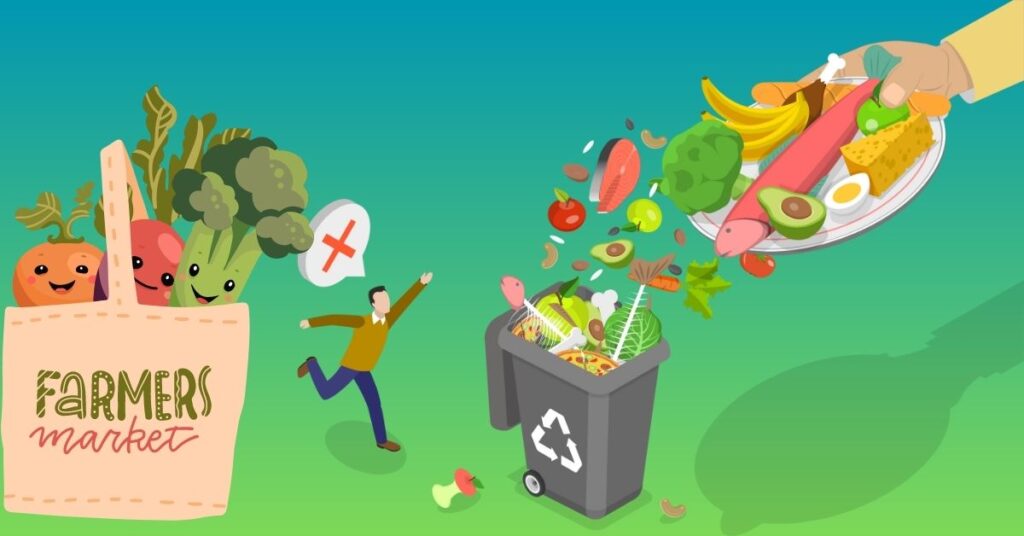
Reduce food waste:
One of the most pressing sustainability challenges of our time is food waste. It’s a complex issue that affects our environment and has significant social and economic implications. However, with some mindfulness and planning, we can take significant steps to reduce food waste and make a positive impact.
Imagine you open your refrigerator, filled with fresh produce, leftovers, and various ingredients. As you take stock of what you have, you envision delicious meals and snacks, carefully planning your culinary adventures. By actively preparing your meals, you’re setting yourself up for success in minimizing food waste.
Planning your meals involves considering what you already have and creating a shopping list that aligns with your needs. Doing so prevents impulse purchases and the temptation to buy more than necessary, reducing the likelihood of ingredients spoiling or being discarded.
Let’s say you’ve planned a week’s worth of meals. You take note of the vegetables in your refrigerator that need to be used up and plan a stir-fry for dinner. You also have some leftover chicken from yesterday’s dinner, which can be repurposed into a delicious salad for lunch. By planning your meals around what you already have, you’re minimizing waste and getting creative with your cooking.
Once you’ve planned your meals, it’s time to shop mindfully. This means buying only what you need and avoiding impulse purchases. It’s easy to get carried away in the aisles of a grocery store, tempted by sales or eye-catching displays. But by staying focused and disciplined, you can significantly reduce food waste.
Another example is you’re at the grocery store, armed with your shopping list. You carefully navigate the aisles, selecting the exact quantities of produce, dairy, and other perishable items you’ll need for the week. You resist the temptation to buy in bulk or grab things that aren’t on your list. With mindful shopping, you’re avoiding unnecessary food waste and saving money by purchasing only what you truly need.
But what about those inevitable leftovers? Properly storing and utilizing leftovers is vital to minimizing waste and maximizing food resources.
For example, you’ve made a delicious dinner, but there’s a portion left over. Instead of letting it languish in the back of your refrigerator, transfer it to an airtight container and label it with the date. This way, you can easily incorporate it into another meal later in the week or enjoy it as a quick and convenient lunch. Properly storing and utilizing your leftovers reduces waste and saves time and money on future meals.
Reducing food waste isn’t just about being environmentally conscious—it’s about making a positive impact on multiple fronts. It conserves resources, reduces greenhouse gas emissions associated with food production and disposal, and even alleviates food insecurity by redirecting edible food to those in need.
So, let’s embrace the power of meal planning, mindful shopping, and proper storage. By taking these steps, we can minimize food waste and contribute to a more sustainable and equitable food system. Let’s make every bite count and savor the satisfaction of knowing we’re making a difference.
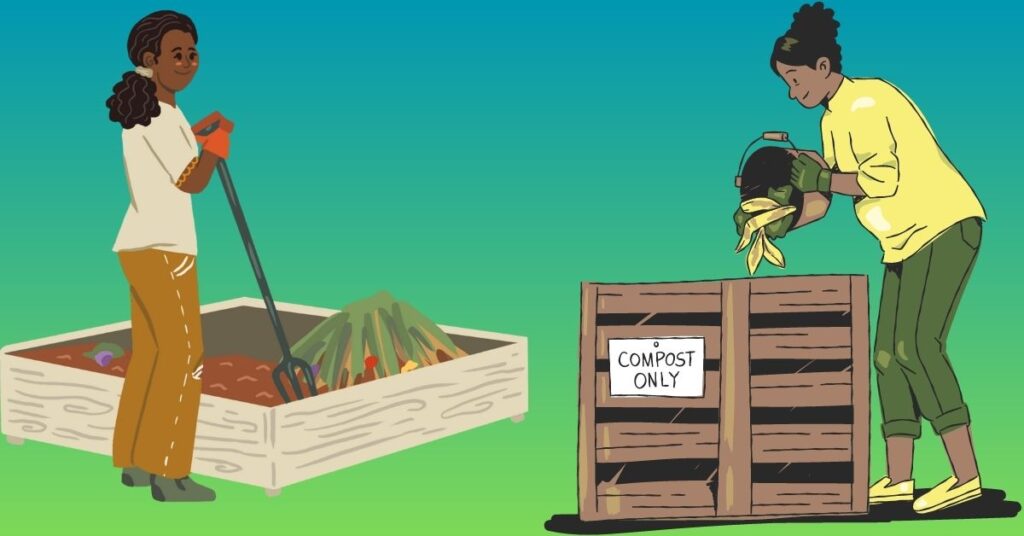
Start composting:
Are you ready to unleash the hidden power of your food scraps and yard waste? It’s time to dive into the world of composting—a sustainable practice that transforms organic materials into nutrient-rich soil. By harnessing the magic of decomposition, you can create a thriving ecosystem within your backyard and significantly reduce your environmental footprint. So, let’s dig in and discover the wonders of composting!
Let’s say you’re in your kitchen, chopping vegetables for dinner. As you peel carrots, trim broccoli stems, and discard onion peels, you wonder if there’s a better way to deal with these scraps than sending them to the landfill. And the answer is a resounding “Yes!” Through composting, you can transform these seemingly useless scraps into “black gold” that nourishes your plants and garden.
Composting is the natural process of breaking down organic materials—such as fruit and vegetable scraps, coffee grounds, eggshells, yard trimmings, and even paper products—into a nutrient-rich soil amendment called compost. It’s a beautiful cycle of life where waste becomes a valuable resource.
For instance, if you’re preparing a fresh salad. Instead of tossing those lettuce leaves and cucumber peels into the trash, you collect them in a designated compost bin or container. Add other kitchen scraps like coffee grounds, tea bags, and crushed eggshells. Over time, these materials decompose, aided by microorganisms and beneficial insects, and transform into nutrient-dense compost.
But composting doesn’t stop at kitchen scraps. Yard waste, such as grass clippings, fallen leaves, and pruning remnants, can also be composted. By diverting these materials from the trash, you’re reducing the burden on landfills and creating a sustainable solution in your backyard.
Imagine you’ve just finished trimming your garden. Instead of bagging the grass clippings and placing them on the curb for disposal, you gather them in a separate compost pile or bin. Along with fallen leaves and small branches, they form rich, dark compost to nourish your plants and promote healthy growth.
But how do you start composting? It’s simpler than you might think. Begin by selecting a suitable composting method that fits your space and needs. You can opt for a traditional compost pile in a designated corner of your yard, use a composting bin or tumbler, or even try vermicomposting with the help of worms.
If you live in an urban apartment with limited outdoor space. In this case, a compact composting or worm bin that fits neatly under your sink is the perfect solution. You can quickly deposit your food scraps, cover them with a layer of dry leaves or shredded paper for balance, and let the composting process work its magic.
Remember, composting is a balance of greens (nitrogen-rich materials like kitchen scraps) and browns (carbon-rich materials like dried leaves or shredded paper). By layering these materials and providing adequate moisture and aeration, you create an environment that encourages decomposition and the growth of beneficial microbes.
As time passes, your compost pile will transform into dark, crumbly soil, ready to be incorporated into your garden beds, potted plants, or lawn top dressing. The nutrients released from the compost will nourish your plants, improve soil structure, and increase water retention, resulting in healthier, more vibrant vegetation.
So, whether you’re an avid gardener or simply want to make a positive impact, composting is a sustainable practice that benefits you and the environment. By converting your food scraps and yard waste into nutrient-rich compost, you’re closing the loop, reducing waste, and creating a thriving ecosystem at home.
Grab a compost bin, gather your organic materials, and embark on this incredible journey. Let’s turn waste into valuable resources together, one decomposing banana peel at a time.

Switch to LED light bulbs:
Get ready to light up your life with a sustainable spark! It’s time to dive into the illuminating world of LED light bulbs and discover why making the switch is a brilliant choice for your pocket and the planet. Say goodbye to energy-guzzling incandescent bulbs and hello to energy-efficient LEDs that are here to revolutionize your lighting experience.
Let’s start by shedding light on the inefficiencies of traditional incandescent bulbs. These outdated lighting options have existed for ages, but they have a dirty secret: they waste significant energy. In fact, only about 10% of the electricity they consume is transformed into light, while the remaining 90% is wasted as heat. That’s like paying for a complete meal but only getting a tiny nibble!
Enter LED light bulbs, the superheroes of the lighting world. LED technology has taken the industry by storm, offering energy efficiency like never before. These bulbs are designed to consume significantly less electricity while providing the same—or even better—quality of light. In fact, LED bulbs can use up to 75% less energy than their incandescent counterparts, meaning you can illuminate your space while keeping your energy bills in check.
Imagine sitting in your cozy living room, surrounded by the warm glow of traditional incandescent bulbs. But as you receive yet another soaring electricity bill, you decide it’s time for a change. You switch to LED bulbs, and instantly, your room is bathed in the same inviting ambiance, but with a noticeable difference: your energy consumption drops and your wallet breathes a sigh of relief.
LED bulbs consume less energy and have a significantly longer lifespan than incandescent bulbs. While traditional bulbs tend to burn out relatively quickly, LED bulbs can last up to 25 times longer. That’s like having a bulb shining through countless movie nights, family dinners, and late-night reading sessions.
If you are tired of constantly replacing bulbs in your kitchen. Every few months, you find yourself on a ladder, swapping out incandescent bulbs that have burned out. Frustrated by the inconvenience and cost, you switch to LED bulbs. Suddenly, you have a reliable lighting solution that can last for years, eliminating the need for frequent replacements and saving you both time and money.
But LED bulbs offer more than just energy efficiency and longevity. They also provide versatility in brightness, color temperature, and even smart features. With LEDs, you can set the mood and ambiance of your space to match any occasion.
If you’re hosting a cozy dinner party at home. You can adjust the brightness with LED bulbs to create a warm and inviting atmosphere. Dim the lights slightly, and let the soft glow of LEDs transform your dining area into a place of warmth and intimacy. Your guests will be enchanted by the ambiance you’ve created, all while knowing you’re making an eco-conscious choice.
Making the switch to LED bulbs not only benefits you directly but also has a positive impact on the environment. By consuming less electricity, LED bulbs help reduce greenhouse gas emissions associated with power generation. It’s like stepping towards a greener, more sustainable future, one bulb at a time.
Can you imagine a city where every household and business switch to LED bulbs? Collective energy savings would be tremendous, leading to a significant reduction in carbon emissions. It’s a small change that, when multiplied by millions, creates a powerful wave of positive change for our planet.
So, get ready to enlighten your space with the power of LED bulbs. Enjoy the energy savings, longer lifespan, and customizable lighting options these bulbs provide. By making the switch, you’re not just brightening up your life—you’re illuminating a path toward a more sustainable and efficient world.
Light up your space confidently, knowing you’re making an intelligent, eco-friendly choice. Let the LED revolution guide you toward a brighter future!

Use public transportation:
Ready to embark on an exciting journey toward greener transportation? Buckle up and join the movement to reduce carbon emissions by opting for sustainable modes of travel. Whether hopping on a bus, cycling through the streets, or taking a leisurely stroll, choosing public transportation, carpooling, biking, or walking can transform your daily commute into a planet-friendly adventure.
Let’s face it: Our reliance on private vehicles has led to a surge in carbon emissions, contributing to climate change and air pollution. But fear not! There’s a host of eco-friendly alternatives waiting to whisk you away to your destination while keeping the planet in mind.
Public transportation is a fantastic option that can significantly reduce your carbon footprint. Trains, buses, trams, and subways offer an efficient way to move large numbers of people, cutting down on individual vehicle emissions and traffic congestion. By opting for public transportation, you become part of a collective effort to create cleaner, more sustainable cities.
Picture this—you’re heading to work in a bustling city. Instead of hopping into your car, you take the subway or bus. As you step onto the train, you’re greeted by a sea of friendly faces, all sharing a common goal: reducing their environmental impact. By embracing public transportation, you’re not only avoiding the stress of traffic but also minimizing carbon emissions and contributing to improved air quality in your city.
Carpooling is another fantastic way to reduce carbon emissions while maintaining the convenience of private transportation. Sharing rides with co-workers, friends, or neighbors can dramatically reduce the number of cars on the road, leading to fewer emissions and less congestion. Plus, carpooling offers the added benefits of cost-sharing and companionship during your daily commute.
If you work in a bustling office park. Instead of driving to work alone, you join forces with a group of nearby colleagues. You form a carpool, taking turns driving and sharing fuel and parking costs. As you cruise down the road, chatting and laughing, you realize carpooling reduces your carbon footprint and fosters a sense of community and camaraderie among your colleagues.
Biking and walking are fantastic shorter-distance options that offer numerous benefits for your health and the environment. Cycling or walking instead of driving can help reduce carbon emissions, improve air quality, and enhance physical well-being. Plus, it’s an excellent opportunity to enjoy the fresh air, explore your surroundings, and feel the city’s rhythm.
You’re heading to the local market to grab some groceries. Instead of hopping into your car, you slip on your helmet and jump on your bicycle. With the wind in your hair and the sun on your face, you pedal through the streets, passing by vibrant storefronts and friendly faces. Not only are you reducing carbon emissions, but you’re also getting exercise and connecting with your community along the way.
But what about when public transportation, carpooling, biking, or walking are not feasible? In such cases, adopting eco-conscious practices can still make a difference. Consider choosing fuel-efficient vehicles, car-sharing services, or even electric or hybrid cars to minimize your carbon footprint.
If you live in a rural area with limited public transportation options. In this case, you invest in a fuel-efficient or hybrid car for your daily commute. By selecting a vehicle with lower emissions and better fuel economy, you’re taking a step towards reducing your environmental impact, even when public transportation isn’t readily available.
So, choosing sustainable transportation options can make a difference, whether hopping on a train, sharing a ride, pedaling through the streets, or strolling along the sidewalks. By reducing carbon emissions and embracing greener alternatives, you become a crucial player in the global effort to combat climate change and create a more sustainable future.
Now, prepare to embark on your sustainable transportation adventure, knowing you’re making a positive impact whenever you choose public transportation, carpooling, biking, or walking. So, wave goodbye to traffic woes and embrace a journey that benefits you and helps preserve our beautiful planet for future generations.

Unplug electronics when not in use:
Get ready to unplug and unleash the power of energy savings! It’s time to tackle a sneaky culprit that lurks in our homes and offices: standby power consumption. By making a simple but impactful change—unplugging electronics when not in use or utilizing power strips—we can end wasted energy and take control of our electricity usage. So, let’s dive in and discover the secrets of unplugging for energy efficiency.
You might not be aware, but even when your electronics are turned off, they can still draw power from the grid. This phenomenon, known as standby power consumption or vampire power, occurs because many devices remain in standby mode, ready to act immediately. But here’s the catch: this idle power consumption can account for a significant portion of your energy bill and contribute to unnecessary carbon emissions.
But fear not! By developing the habit of unplugging electronics when they’re not in use, you can reclaim control over your energy consumption and positively impact your wallet and the environment.
Imagine you’re going to bed after a long day. You walk through your home, switching off lights and bidding farewell to your trusty electronic companions. However, before turning in, you take an extra step and unplug devices like your television, gaming console, and computer. Doing so eliminates the standby power consumption, ensuring that these devices don’t draw any electricity while you’re sleeping. It’s a small action that makes a significant difference.
But let’s be realistic. Unplugging each device individually can be overwhelming and time-consuming. That’s where power strips come to the rescue! These handy tools allow you to plug multiple devices into a single outlet and quickly turn them off with a switch flip. They act as gatekeepers, cutting off the flow of standby power and saving you the hassle of unplugging each device separately.
Picture your home office setup. You have a computer, monitor, printer, and other peripherals that require power. Instead of plugging each device directly into the wall outlet, you connect them to a power strip. At the end of the workday, you turn off the power strip with a single switch, effectively shutting down all devices and preventing standby power consumption. It’s a simple yet efficient way to take control of your energy usage.
But what about those devices that need to stay plugged in, such as refrigerators or Wi-Fi routers? Fear not! Not all devices need to be unplugged. Instead, focus on the ones that consume more power when in standby mode or those you don’t use frequently. You can make a substantial difference in energy consumption by selectively unplugging these devices or using power strips.
Think about your entertainment center. You have a television, a gaming console, a sound system, and various media players. These devices are notorious for their standby power consumption. Instead of leaving them plugged in and drawing power all day, you use a power strip to control their energy usage. When you’re done watching TV or gaming, a simple switch turns off the power strip, cutting off the standby power drain and saving energy.
By being mindful of standby power consumption and unplugging or utilizing power strips, you reduce energy usage and save money on electricity bills. It’s a win-win situation for both your wallet and the planet.
So, let’s get into the habit of unplugging electronics when they’re not in use or employing the power of power strips. Taking control of standby power consumption empowers us to positively impact energy efficiency and contribute to a more sustainable future.
Unplug confidently, knowing that whenever you disconnect an idle device, you’re curbing energy waste and moving towards a more conscious and responsible energy consumption lifestyle.

Opt for natural cleaning products:
It’s time to bid farewell to harsh chemicals and embrace eco-friendly alternatives that keep your home squeaky clean and help protect the environment. By opting for natural cleaning solutions or creating your own using common household ingredients like vinegar, baking soda, and essential oils, you can transform your cleaning routine into a planet-friendly experience. So, let’s roll up our sleeves and discover the wonders of natural cleaning!
Traditional cleaning products often contain harsh chemicals that can harm our health and the environment. These products leave a trail of potential hazards, from toxic fumes to harmful residues. But fret not! Natural cleaning products offer a safer and more sustainable option.
Envision yourself tidying up your kitchen. Instead of reaching for a commercial all-purpose cleaner in a plastic bottle containing a cocktail of chemicals, you grab a spray bottle filled with a simple yet effective natural solution. You can breathe easily as you spritz the surfaces with your homemade mixture, knowing you avoid unnecessary exposure to potentially harmful substances.
Vinegar is one of your arsenal’s most versatile and eco-friendly cleaning allies. This household staple is a powerhouse for removing stains, eliminating odors, and disinfecting surfaces. With its acidic properties, vinegar can tackle grime and grease effectively.
You’re faced with a stubborn mineral buildup on your showerhead. Instead of resorting to a chemical-laden descaler, you reach for a plastic-free solution: vinegar. By immersing the showerhead in vinegar and water and allowing it to soak, you’ll witness the magical fizzing action as vinegar dissolves the mineral deposits. After a thorough rinse, your showerhead will be gleaming like new, without the need for harsh chemicals.
Baking soda, another kitchen staple, is a natural cleaning superstar. Its gentle yet abrasive texture makes it perfect for tackling tough stains, deodorizing, and scouring surfaces. From kitchens to bathrooms, baking soda can work wonders throughout your home.
If you’re cleaning your oven after a cooking extravaganza. Instead of using a caustic oven cleaner that emits harsh fumes, you create a simple paste with baking soda and water. By spreading this paste onto the oven surfaces and allowing it to sit overnight, you’ll wake up to a grime-free oven that only requires a gentle wipe-down. It’s a safer, more eco-friendly approach that yields fantastic results.
Essential oils can also play an influential role in natural cleaning. These concentrated plant extracts add a pleasant fragrance to your cleaning solutions and boast antimicrobial properties. Essential oils like tea tree oil, lavender, and lemon can enhance the effectiveness of your natural cleaning products.
If you want to freshen up your bathroom and leave a delightful scent lingering in the air. Instead of relying on synthetic air fresheners that release harmful chemicals, you create a simple room spray using distilled water, a few drops of essential oil, and a splash of witch hazel. As you spritz the room with this aromatic blend, you’ll enjoy the invigorating scents while benefiting from the natural antimicrobial properties of the essential oils.
But what about the convenience of store-bought natural cleaning products? While numerous eco-friendly cleaning solutions are available, making your own can be cost-effective and customizable. It allows you to tailor the ingredients to your preferences and needs, reducing waste and promoting a more sustainable lifestyle.
You’re in the laundry room, ready to tackle a load of clothes. Instead of using a commercial laundry detergent packaged in plastic, you create your own by combining washing soda, castile soap, and a few drops of your favorite essential oil. This DIY detergent not only cleans effectively but also reduces plastic waste and its impact on the environment.
So, get ready to embrace the power of natural cleaning products. From vinegar and baking soda to essential oils, these eco-friendly alternatives offer a safe, effective, and sustainable way to keep your home clean and fresh. By opting for natural solutions or creating your own, you positively impact your health, the environment, and budget.
Now, armed with these natural cleaning superheroes, let your cleaning prowess shine while reducing your environmental footprint. Together, let’s scrub, polish, and disinfect with confidence, knowing that we’re embracing a more sustainable and earth-friendly approach to cleaning.

Go paperless:
It’s time to bid farewell to mountains of paperwork and embrace a more sustainable and efficient way of managing documents, bills, and tickets. By switching to digital alternatives, such as electronic documents, online billing, and e-tickets, you can significantly reduce paper usage and contribute to a greener future. So, let’s dive in and uncover the wonders of going paperless!
The digital age has brought us a wealth of innovative tools and technologies in a world that once relied heavily on physical paper documents. We can unlock many benefits by embracing these advancements while minimizing our environmental impact.
One simplest and most effective way to go paperless is by switching to digital documents. Instead of printing out every report, invoice, or contract, you can opt for electronic versions that can be stored, accessed, and shared digitally.
Imagine you’re at work, and you receive an essential document that needs your review. Instead of printing it out, you open it on your computer or tablet and annotate it digitally. You can save it to a secure cloud storage platform or a dedicated folder on your computer, eliminating the need for physical copies and reducing paper waste. With digital documents, you can effortlessly search for specific information, collaborate seamlessly, and organize your files efficiently.
Online billing is another fantastic way to go paperless. Instead of receiving paper bills in the mail, you can opt for electronic billing and have invoices, statements, and payment reminders delivered directly to your inbox. This not only reduces paper waste but also simplifies your financial management.
Say you’re in charge of managing your household’s monthly expenses. Instead of sorting through piles of paper bills, you receive electronic statements from your utility providers, credit card companies, and other service providers. You review and organize these digital statements with a few clicks, track your expenses, and even set up automatic payments. It’s a streamlined and eco-friendly approach that reduces clutter and saves time.
When it comes to events and travel, e-tickets are a game-changer. Instead of printing out physical tickets, you can opt for digital tickets that can be scanned directly from your smartphone or emailed to you in a digital format. This eliminates the need for paper tickets and makes entry to events and transportation seamless.
Imagine you’re attending a concert or a sporting event. Instead of worrying about losing your paper ticket or fumbling to find it in a sea of belongings, you simply present your smartphone with the digital ticket barcode at the entrance. A quick scan, and you’re in! It’s a hassle-free and eco-friendly solution that eliminates the waste associated with paper tickets.
But going paperless continues beyond documents, billing, and tickets. You can also reduce paper usage in other areas of your life. For instance, opt for digital newsletters and magazines instead of subscribing to physical copies. Use electronic notepads or apps to jot down notes and reminders, reducing the need for sticky notes or paper notebooks. Explore digital books and e-readers instead of buying physical copies.
Say you’re an avid reader. Instead of purchasing printed books, you invest in an e-reader or use a reading app on your smartphone or tablet. With a vast library of digital books, you can enjoy your favorite novels, expand your knowledge, and reduce the demand for paper production. It’s a win-win situation that combines convenience with sustainability.
Going paperless reduces waste and conserves resources like water and energy used in paper production. Additionally, you free up physical space in your home or office, minimize clutter, and simplify your life by embracing digital alternatives.
So, let’s harness the power of technology and go paperless. You’re moving toward a more sustainable and efficient future by consciously switching to digital documents, electronic billing, and e-tickets. Say goodbye to paper jams, overflowing filing cabinets, and the need for endless reams of paper. Embrace the digital realm, and let’s unlock the potential of a paperless world together.
Now, armed with your digital devices and a commitment to sustainability, go forth confidently, knowing that every digital document, e-bill, and e-ticket brings us closer to a greener and more efficient world.
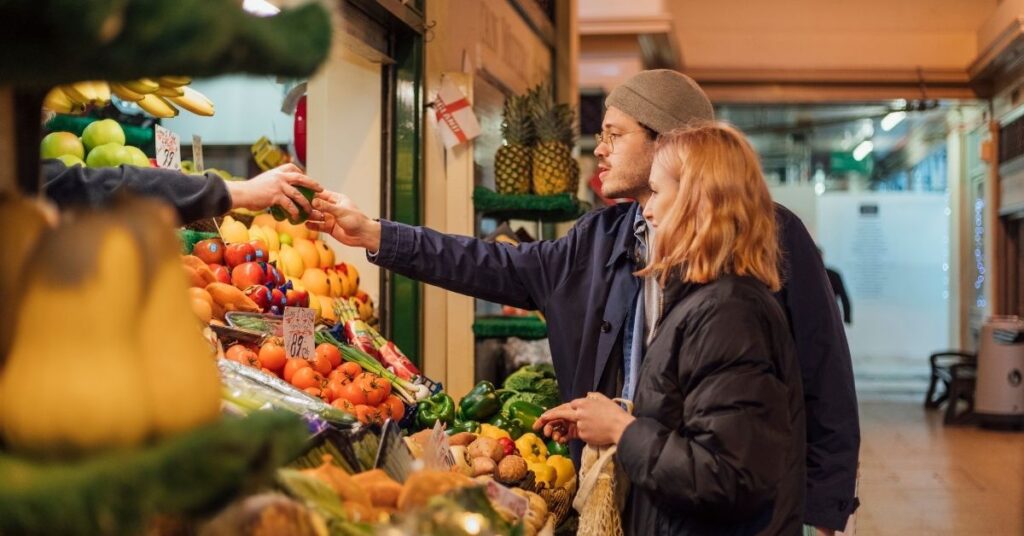
Support local and sustainable businesses:
Get ready to embark on an exciting journey of supporting local and sustainable businesses! It’s time to channel your purchasing power toward a greener and more resilient economy. By choosing to buy goods and services from local establishments that prioritize sustainability, you can make a positive impact on both your community and the planet. So, let’s dive in and discover the wonders of supporting local and sustainable businesses!
Local businesses offer a refreshing alternative in a world dominated by big corporations and global supply chains. These establishments are often deeply rooted in the community, fostering a sense of connection and camaraderie. By supporting local businesses, you’re investing in the vitality and prosperity of your own neighborhood.
Imagine strolling through the streets of your town or city. As you pass the local bakery, you step inside instead of visiting a chain store. By purchasing your bread and pastries from this neighborhood gem, you enjoy freshly baked treats and contribute to the livelihood of the bakers and the local economy. It’s a win-win situation that strengthens the fabric of your community.
But it’s not just about supporting local businesses—it’s also about choosing to prioritize sustainability. Purchasing goods and services from sustainable businesses sends a powerful message that environmental responsibility is a priority for you as a consumer.
Sustainable businesses go beyond mere profit-making. They integrate eco-friendly practices into their operations, prioritize resource conservation, and take steps to minimize their environmental impact. From sourcing sustainable materials to implementing energy-efficient practices, these businesses lead toward a greener future.
If you are in the market for a new piece of furniture. Instead of heading to a big-box store, you research local furniture makers who use sustainably sourced wood and environmentally friendly finishes. Purchasing a beautifully crafted piece from one of these artisans brings a unique item into your home and supports the local business’s sustainable practices and values.
Supporting local and sustainable businesses also contributes to a more resilient and self-reliant local economy. Buying locally produced goods and services reduces the need for long-distance transportation, which helps lower carbon emissions and conserve energy.
Imagine you’re searching for fresh produce to prepare a healthy meal. You visit a local farmers market instead of a large supermarket chain. You purchase various locally grown fruits and vegetables as you peruse the colorful stalls and converse with the farmers. By doing so, you support the local agricultural community, reduce food miles, and savor the flavors of fresh, seasonal produce.
Supporting local and sustainable businesses goes beyond purchasing goods; it also extends to services. Many local companies prioritize sustainability in their practices, from restaurants and cafes to repair shops and professional services.
You need a new hairstyle. Instead of opting for a chain salon, you research and choose a local hairdresser who uses eco-friendly hair products and practices sustainable waste management. By booking an appointment with this salon, you achieve a fabulous new look and align your values with your choices as a consumer.
But what if local and sustainable options are unavailable in your area? Don’t worry! You can still make a difference by supporting online businesses and brands prioritizing sustainability. Look for organic, fair trade, or B Corp certifications that signify a commitment to ethical and sustainable practices.
You need a new pair of shoes, but local, sustainable shoe brands are not easily accessible in your area. In this case, you turn to online platforms that curate and offer products from eco-conscious and ethically responsible brands. By purchasing from these online retailers, you support sustainable practices and contribute to a greener economy, even from the comfort of your home.
So, let’s embrace the power of our purchasing decisions and support local and sustainable businesses. By doing so, we strengthen our communities, protect the environment, and pave the way for a more sustainable future. Together, let’s champion the values of sustainability, resilience, and community by choosing to support the businesses that align with our principles.
Now, go forth confidently and explore the local gems in your area, seeking out those businesses that prioritize sustainability. By voting with your wallet, you become an agent of change and contribute to building a more sustainable and vibrant world, one purchase at a time.

Reduce meat consumption:
Get ready to embark on a delicious and sustainable culinary adventure! It’s time to explore the world of plant-based meals and discover how reducing meat consumption can significantly impact the environment. Incorporating more plant-based meals into your diet allows you to explore various delicious flavors and contribute to a greener and more sustainable future. So, let’s dive in and uncover the wonders of reducing meat consumption!
The environmental impact of meat production is undeniable. The meat industry heavily burdens our planet, from deforestation to water pollution and greenhouse gas emissions. However, by making conscious choices and embracing plant-based meals, we can minimize the environmental footprint associated with meat production and foster a more sustainable food system.
Picture a typical dinner plate that includes a large serving of steak. Now imagine the resources required to produce that steak—vast amounts of water, land, and feed for the animals. You significantly reduce the environmental impact of meat production by choosing a plant-based alternative like a hearty lentil stew or a flavorful vegetable stir-fry. It’s a small but meaningful change that can make a world of difference.
Incorporating more plant-based meals into your diet doesn’t mean sacrificing taste or variety. Quite the contrary! It opens up a world of culinary possibilities, allowing you to explore a rich tapestry of flavors, textures, and creative dishes.
Let’s say you’re hosting a dinner party for friends and family. Instead of serving a traditional meat-centric menu, you create a plant-based feast showcasing the abundance of delicious options. You prepare a colorful spread of roasted vegetables, flavorful grain salads, plant-based protein alternatives like tofu or tempeh, and mouthwatering plant-based desserts. As your guests savor each bite, they discover plant-based cuisine’s incredible diversity and deliciousness.
But it’s not just about the taste but also about the positive environmental impact. Plant-based meals require fewer resources, such as land, water, and feed, than meat-based meals. By reducing meat consumption, you’re helping to conserve natural resources, protect biodiversity, and reduce greenhouse gas emissions.
A family that traditionally consumes meat with every meal. They decide to make a conscious effort to have at least two plant-based dinners per week. Over time, this small change adds up, reducing demand for meat products. As a result, fewer animals must be raised for meat production, leading to decreased deforestation, water usage, and methane emissions. It’s a step towards a more sustainable and balanced food system.
Reducing meat consumption doesn’t mean eliminating it entirely. It’s about finding a balance and making conscious choices. Consider adopting practices like Meatless Mondays or incorporating plant-based meals as a regular part of your weekly menu. Gradually increase the number of plant-based meals you enjoy, and you’ll witness its positive impact on your health and the environment.
You’re a meat lover, but you’re interested in reducing your environmental impact. You decide to start with Meatless Mondays, where you commit to having a plant-based meal every Monday. As you explore new recipes, discover flavorful plant-based ingredients, and experience the positive effects on your well-being, you gradually incorporate more plant-based meals into your weekly routine. It becomes an exciting culinary adventure that aligns with your values and contributes to a healthier planet.
It’s important to remember that every plant-based meal you enjoy is a step towards a more sustainable future. Whether it’s a colorful salad, a hearty grain bowl, or a satisfying plant-based burger, each choice makes a difference.
You’re at a restaurant, contemplating your menu options. Instead of automatically selecting a meat-based dish, try the plant-based option—a flavorful chickpea curry with fragrant spices and tender vegetables. As you savor each bite, you not only delight in the incredible taste but also take pride in knowing that your choice contributes to reducing the environmental impact of the food industry.
So, let’s embark on a culinary journey that celebrates the flavors of plant-based meals. Reducing meat consumption and embracing delicious alternatives can protect the environment, conserve resources, and promote a more sustainable food system.
With an open mind and a taste for adventure, explore the bountiful world of plant-based cuisine. The vibrant flavors and diverse ingredients inspire you to create delightful and sustainable meals that nourish your body and help protect our precious planet.

Buy in bulk:
It’s time to say goodbye to excess packaging waste and embrace a more sustainable approach to shopping. By purchasing products like grains, beans, and spices in bulk, you not only reduce the amount of packaging that ends up in landfills but also save money and enjoy the convenience of having pantry staples at your fingertips. So, let’s dive in and discover the wonders of bulk buying!
Packaging waste has become a significant environmental concern in our modern consumer-driven world. From single-use plastic containers to excessive cardboard boxes, the packaging industry contributes to pollution, resource depletion, and overflowing landfills. But fret not! Buying in bulk can significantly reduce your environmental impact and make a positive change.
You are at a grocery store, standing in the aisle filled with neatly packaged grains, beans, and spices. Instead of reaching for individual, pre-packaged items, you head to the bulk section. Armed with reusable containers or bags, you scoop up the desired quantities of your favorite pantry staples. By choosing bulk buying, you eliminate the need for excessive packaging, such as plastic bags and boxes. It’s a small action that adds up to a significant reduction in waste.
Buying in bulk not only reduces packaging waste but also offers practical benefits. You can customize the quantities of the products you purchase, giving you better control over your consumption. It also means fewer trips to the store, as you can stock up on pantry staples that last for more extended periods.
If you’re an avid cook and frequently use ingredients like rice, lentils, and spices. Instead of buying these items in small, pre-packaged quantities, you buy in bulk. By purchasing larger quantities, you can ensure a steady supply of these essential items in your pantry, reducing the need for frequent trips to the store. It’s a time-saving and cost-effective approach that simplifies your shopping routine.
Bulk buying also offers the opportunity to support local businesses and explore a broader range of products. Many independent stores, co-ops, and farmer’s markets have dedicated bulk sections where you can find a diverse selection of grains, beans, spices, and more. By opting for these local sources, you contribute to the vitality of your community and have the chance to discover unique, locally sourced products.
Imagine you’re browsing through a neighborhood co-op or a farmer’s market. As you explore the bulk section, you come across various specialty grains and spices sourced from local farms. You decide to try something new—a heritage grain or a unique spice blend that adds an exciting twist to your culinary adventures. By buying bulk from local sources, you support small-scale producers and broaden your culinary horizons.
To make the most of your bulk buying experience, it’s essential to come prepared with reusable containers or bags. Investing in durable containers or reusable cloth bags minimizes waste and keeps your bulk purchases fresh and organized.
Suppose you’re planning a trip to your favorite bulk store or market. Before heading out, you gather a set of glass jars or reusable cloth bags. As you go through the bulk section, you fill the containers with your desired items, carefully labeling them for easy identification at home. Using reusable containers eliminates the need for single-use packaging and keeps your pantry beautifully organized.
Buying in bulk not only reduces packaging waste but also encourages mindful consumption. When you have a larger quantity of a product, you become more conscious of utilizing it effectively and minimizing food waste. This, in turn, contributes to a more sustainable lifestyle.
Imagine having a large bag of grains or a jar of spices purchased in bulk. As you incorporate these items into your meals, you become more aware of portion sizes and plan your meals accordingly. You aim to utilize the ingredients effectively, ensuring minimal waste. By doing so, you not only reduce food waste but also save money and contribute to a more sustainable food system.
So, let’s embrace the power of bulk buying and reduce packaging waste. By purchasing grains, beans, spices, and other pantry staples in bulk, you enjoy the convenience of well-stocked shelves and positively impact the environment.
With your reusable containers or bags, go confidently, knowing that every bulk purchase brings us closer to a more sustainable and waste-conscious world. Let the pantry-stocking adventure begin!

Repair instead of replacing:
It’s time to shift our mindset away from the throwaway culture and embrace the art of repairing our belongings. By choosing to repair instead of replace, we not only extend the lifespan of our cherished items but also reduce waste, save money, and tap into our creativity. So, let’s dive in and uncover the wonders of repair!
In our fast-paced, consumer-driven society, it’s easy to fall into the trap of disposing of items at the first sign of wear or damage. However, repairing allows us to break free from this cycle and forge a more sustainable path. By restoring our belongings, we give them a new lease on life and rediscover the value of craftsmanship, resourcefulness, and ingenuity.
So your favorite pair of jeans has developed a small tear near the knee. Instead of discarding them and rushing to the store for a replacement, you take the time to mend the tear. With a few basic sewing skills and a needle and thread, you lovingly repair the jeans, reinforcing the tear and restoring their original glory. By choosing repair, you save money and honor the memories and experiences associated with those well-worn jeans.
Repairing instead of replacing allows us to reduce waste and conserve resources. It’s estimated that the manufacturing process of new products contributes significantly to carbon emissions, water usage, and resource depletion. By extending the lifespan of our belongings, we minimize the need for new production, thereby lessening our environmental impact.
Your trusty smartphone starts acting up, showing sluggishness and a dying battery. Instead of rushing to buy the latest model, you explore the option of repairing it. You find a reliable repair shop to replace the battery and troubleshoot software issues. By choosing repair, you save money and reduce electronic waste and the environmental toll of manufacturing new devices.
Repairing our belongings also allows us to tap into our creativity and problem-solving skills. It’s an opportunity to learn new techniques, develop practical knowledge, and gain a sense of accomplishment. By taking matters into our own hands or seeking the help of skilled professionals, we can transform a broken item into a renewed treasure.
So you have a favorite vintage lamp that has stopped working. Instead of giving up on it, you take it to a local lamp repair specialist. As you watch them disassemble and diagnose the issue, you gain insights into the inner workings of the lamp. With their guidance, you learn how to rewire it and replace faulty components. By successfully repairing the lamp, you bring it back to life and develop new skills and a deeper appreciation for the craftsmanship of bygone eras.
Repairing also opens the door to customization and personalization. We can infuse our belongings with our creativity and style as we mend them. Whether adding unique patches to clothing, repainting a worn piece of furniture, or revamping outdated electronics, repair becomes an avenue for self-expression.
You own a worn-out denim jacket that has seen better days. Instead of tossing it aside, you turn it into a unique piece. You gather fabric scraps, decorative patches, and your trusty sewing machine. With creativity and a dash of imagination, you transform the jacket into a personalized work of art. By repairing and customizing it, you give the jacket a new life and showcase your unique style and creativity.
Repairing instead of replacing helps foster a sense of connection to our belongings. In a world of disposable goods, we often lose touch with the actual value and stories behind the items we own. By investing time and effort into repairing them, we form a deeper bond and appreciation for the things surrounding us.
You have a wooden chair passed down through generations in your family. Over time, it develops some wobbly legs and a loose seat. Instead of discarding it, you take the time to repair it, reinforcing the joints and restoring stability. Sitting on the chair makes you feel connected to your family’s history and the stories embedded within it. By choosing repair, you honor the legacy of the chair and the memories it holds.
So, let’s embrace the power of repair and extend the life of our belongings. By choosing to mend instead of replace, we reduce waste, save money, tap into our creativity, and develop a deeper connection to the items surrounding us.
Now, armed with a toolkit and a can-do attitude, go forth with confidence, knowing that every repair is an opportunity for renewal and a step towards a more sustainable and mindful approach to consumption. Let the repair revolution begin!

Embrace natural fabrics:
Make a conscious choice regarding our clothing and opt for garments made from organic cotton, hemp, bamboo, and other natural materials. By embracing these fabrics, we enjoy their comfort and style and contribute to a greener, more sustainable fashion industry. So, let’s explore the wonders of natural fabrics and embark on a journey toward eco-conscious fashion!
In a world dominated by fast fashion and synthetic fabrics, embracing natural materials is a powerful step towards a more sustainable wardrobe. Natural fabrics, such as organic cotton, hemp, and bamboo, are derived from renewable resources and have a significantly smaller environmental footprint than their synthetic counterparts.
Picture yourself standing in a clothing store with a rack of t-shirts. Instead of choosing one made from conventional cotton, often grown with pesticides and synthetic fertilizers, you opt for a t-shirt made from organic cotton. By selecting this, you support a farming method that promotes soil health, biodiversity, and water conservation. It’s a small yet impactful decision that aligns your fashion choices with your values.
Organic cotton is one of the most popular natural fabrics in sustainable fashion. Grown without toxic chemicals reduces the environmental impact of conventional cotton farming. Organic cotton is also known for its softness, breathability, and durability, making it a comfortable and long-lasting choice.
Practical Example: Imagine wearing an organic cotton t-shirt on a warm summer day. Its soft fibers feel gentle against your skin, and its breathability keeps you cool and comfortable. This t-shirt will withstand numerous washes and retain quality with proper care, providing long-term enjoyment. By choosing organic cotton, you prioritize your comfort and contribute to a more sustainable fashion industry.
Hemp is another remarkable natural fabric that deserves our attention. It’s a versatile and durable material that requires minimal water and pesticides to grow. Hemp fibers are known for their strength, moisture-wicking properties, and resistance to wrinkles, making them an excellent choice for various types of clothing.
Picture yourself wearing a hemp blouse on a busy day at work. Despite the long hours and constant movement, the blouse remains fresh and wrinkle-free, thanks to hemp’s natural properties. Its moisture-wicking abilities keep you cool and dry, even during the hottest summer days. By choosing hemp clothing, you enjoy its unique qualities and support a more sustainable fashion ecosystem.
Bamboo fabric has gained popularity recently due to its softness, breathability, and rapid growth as a sustainable resource. It’s important to note that not all bamboo fabrics are created equal. Look for those made from bamboo fibers processed using eco-friendly methods, such as mechanical or closed-loop processes, to ensure minimal environmental impact.
Practical Example: Imagine wearing a bamboo dress to a summer gathering. The fabric feels incredibly soft and lightweight against your skin, providing a luxurious and comfortable experience. You appreciate the dress’s breathability, allowing air to flow and keeping you cool in the heat. Choosing bamboo fabric produced through eco-friendly methods enables you to select a sustainable fashion without compromising style or comfort.
Embracing natural fabrics goes beyond the materials themselves. It also involves considering the entire lifecycle of a garment, including dyeing and finishing processes. Opting for natural dyes, low-impact dyes, or even undyed fabrics further reduces the environmental impact of our clothing choices.
Let’s say you’re in search of a new pair of jeans. Instead of choosing a conventionally dyed pair, you opt for jeans made from undyed organic cotton denim. These jeans retain the natural color of the cotton fibers, reducing the need for chemical dyes and minimizing water and energy usage in the dyeing process. You consciously contribute to a more sustainable and environmentally friendly fashion industry by embracing undyed fabrics.
As consumers, we can drive change in the fashion industry. By embracing natural fabrics and supporting brands that prioritize sustainable practices, we send a message that we value environmentally friendly and ethical fashion choices.
When shopping online for a new sweater. Before making a purchase, you research the brand’s values and production practices. You find a brand that uses organic cotton or other natural fabrics, ensures fair wages for workers, and prioritizes transparency in its supply chain. By supporting this brand, you add a beautiful and sustainable sweater to your wardrobe and contribute to a shift toward a more ethical and sustainable fashion industry.
So, let’s embrace the beauty and sustainability of natural fabrics. By choosing clothing made from organic cotton, hemp, bamboo, and other natural materials, we can enjoy fashion that looks and feels great, aligns with our values, and reduces the fashion industry’s environmental impact.
With the knowledge of sustainable fabrics, go forth confidently and explore the world of eco-conscious fashion. Let your clothing choices reflect your commitment to a greener, more sustainable future.

Conserve water:
Take a closer look at our water consumption habits and discover the wonders of water-saving devices and mindful usage. By incorporating water-saving practices into our daily routines, we reduce water waste and contribute to preserving this precious resource. So, let’s jump in and explore the secrets of conserving water!
Water is a vital resource that sustains life on our planet, yet it is often taken for granted. By being mindful of our water usage and implementing water-saving devices, we can significantly impact conserving this invaluable resource.
Step into a refreshing shower, knowing the showerhead you’ve installed is low-flow. As the water cascades over you, you experience the same invigorating sensation while using significantly less water. Choosing a water-saving showerhead reduces water consumption and energy usage by reducing the amount of hot water needed. It’s a small change that adds up to a significant impact.
Installing water-saving devices, such as low-flow showerheads and faucets, is a simple yet effective way to conserve water. These devices restrict water flow without compromising performance, allowing you to maintain a satisfying shower or a steady stream from your faucet while reducing water usage.
You’re brushing your teeth at the bathroom sink. As you turn on the faucet, you notice that it has a low-flow aerator installed. This small device mixes air with water, giving you a steady stream while using less water overall. By embracing this simple modification, you save gallons of water each time you brush your teeth or wash your hands.
Being mindful of water usage goes beyond installing water-saving devices. It involves adopting small habits and making conscious choices in our daily routines. We can significantly reduce our water consumption without sacrificing comfort or cleanliness by making a few adjustments.
When doing the laundry. Instead of running the washing machine for small loads, you wait until you have a full load to maximize efficiency. By doing so, you not only reduce the number of cycles and water used but also save on energy costs. It’s a win-win situation that minimizes water waste and makes your laundry routine more eco-friendly.
Being mindful of water usage can make a substantial difference in the kitchen. Simple practices like not letting the faucet run continuously while washing dishes, using a basin to rinse fruits and vegetables instead of running water, and utilizing a dishwasher only when it’s full can significantly reduce water waste.
Washing dishes after a delicious homemade meal. Instead of letting the water run continuously while scrubbing each dish, you fill the sink or a basin with soapy water. This way, you can wash and rinse multiple items with minimal water usage. By adopting this practice, you save gallons of water with each dishwashing session and develop a more sustainable approach in the kitchen.
Outdoor water usage is another area where we can make a difference. By collecting rainwater for gardening, using a broom instead of a hose to clean outdoor spaces, and watering plants during cooler times of the day to minimize evaporation, we can conserve water in our outdoor activities.
If you’re tending to your garden on a sunny day. Instead of using a hose to water your plants, you reach for a watering can or utilize a drip irrigation system. You target the water directly at the plant’s roots, minimizing runoff and evaporation. This water-wise approach conserves water and promotes healthier and more resilient plants.
It’s important to remember that conserving water is a collective effort that extends beyond our individual actions. Supporting water conservation initiatives, advocating for responsible water management, and raising awareness about the importance of water preservation can inspire positive change on a larger scale.
Join a local community group focused on water conservation. You organize educational workshops, participate in clean-up activities around local water sources, and engage in initiatives promoting responsible water usage. By taking an active role in your community, you contribute to a culture of water conservation and inspire others to join the cause.
So, let’s make a splash in water conservation! By installing water-saving devices, adopting mindful habits, and advocating for responsible water management, we can protect this precious resource for future generations.
With the knowledge and commitment to water conservation, confidently make a splash in sustainable living. Let each drop of water count as we strive to create a more water-wise and sustainable future.
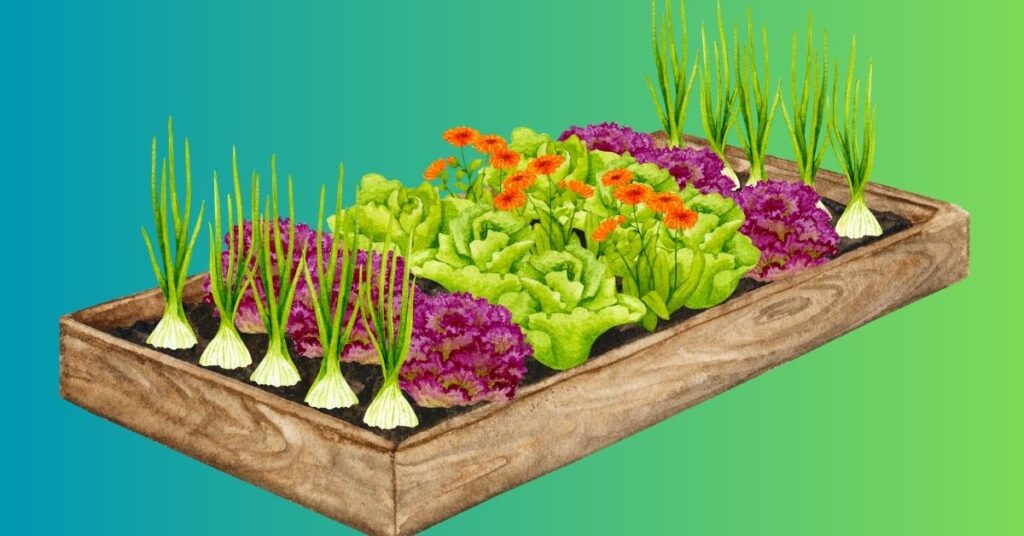
Start a vegetable garden:
Unlock the joys of growing your own vegetables and herbs. By starting a vegetable garden, you not only enjoy the satisfaction of nurturing your plants but also reduce your dependence on store-bought produce, embrace a healthier lifestyle, and contribute to a more sustainable food system. So, grab your gardening tools, and let’s explore the wonders of cultivating your delicious bounty!
In a world dominated by mass-produced and heavily transported food, starting a vegetable garden allows us to take control of our food sources and reconnect with the natural world. Whether you have a spacious backyard or a small balcony, growing vegetables and herbs is a rewarding and empowering experience.
Standing in your backyard, surrounded by vibrant greenery. In one corner, you have a row of juicy tomatoes ripening on the vine, while nearby, an assortment of leafy greens thrive in the sun. As you tend to your garden, you marvel at the sight of nature’s bounty and anticipate the flavors of the homegrown produce that will soon grace your plate. By starting a vegetable garden, you enjoy the freshest ingredients and reduce your carbon footprint by minimizing the transportation miles of your food.
Growing your own vegetables and herbs allows you to embrace a more sustainable and environmentally friendly approach to food. By reducing your dependence on store-bought produce, you minimize the use of pesticides, herbicides, and synthetic fertilizers often used in conventional agriculture. Additionally, you can grow your plants organically, prioritizing soil health, biodiversity, and ecological balance.
You decide to grow your own lettuce and herbs. With a few planters or a dedicated patch of soil, you cultivate varieties like crisp romaine lettuce and aromatic basil. As you harvest the leaves for your salads and garnishes, you revel in the knowledge that your greens are free from harmful chemicals. By growing your vegetables and herbs organically, you not only protect your health but also contribute to a more sustainable and resilient ecosystem.
Starting a vegetable garden also allows you to enjoy homegrown produce’s unparalleled freshness and flavors. There’s something incredibly satisfying about plucking a ripe tomato from the vine, snipping fragrant herbs for a meal, or biting into a crispy cucumber you grew yourself. The taste of homegrown goodness is unmatched and adds an extra dimension to your culinary creations.
Preparing a simple summer salad using ingredients from your garden. You slice juicy heirloom tomatoes, toss in crisp cucumber slices, and sprinkle freshly harvested basil leaves. As you take your first bite, the explosion of flavors transports you to a world of culinary delight. By growing your own vegetables, you elevate your meals and infuse them with the vibrant tastes of nature’s bounty.
Beyond the immediate benefits, starting a vegetable garden can also foster a deeper connection to the food we consume. By witnessing the entire growth process—from planting the seeds to nurturing the plants to harvesting the produce—we gain a greater appreciation for the time, effort, and resources involved in food production.
If you decide to grow your own carrots. You prepare the soil, plant the tiny seeds, and patiently wait as they germinate and sprout. As the plants grow, you observe the delicate carrot tops emerge from the earth, a promise of the hidden treasure beneath. Finally, the time comes to harvest, and you gently pull the vibrant orange roots from the soil. At that moment, you feel a profound connection to the food on your plate and a deep appreciation for the journey it took to reach your table.
Starting a vegetable garden requires a large space or extensive gardening knowledge. You can grow vegetables and herbs in containers, vertical gardens, or small raised beds, even with limited room. You can create a thriving garden tailored to your space and preferences with research, planning, and dedication.
You live in an apartment with a small balcony. Despite the limited space, you transform it into a lush and productive garden. You grow various herbs, salad greens, cherry tomatoes with hanging planters, vertical trellises, and compact containers. Your balcony garden becomes a sanctuary of greenery and a source of fresh, homegrown produce. By making the most of your space, you demonstrate that anyone can start a vegetable garden, regardless of their living situation.
By starting a vegetable garden, you gain access to nutritious, flavorful, and pesticide-free produce and cultivate a deeper connection to the natural world, reduce your environmental impact, and embrace a more sustainable lifestyle.
With your gardening tools and a passion for homegrown goodness, sow the seeds of your vegetable garden with confidence. Let the joy of cultivation, the taste of fresh produce, and the satisfaction of self-sufficiency guide you on this green journey toward a more sustainable and fulfilling life.

Upcycle and repurpose:
Unleash your creativity and embark on a journey of upcycling and repurposing! It’s time to reimagine the potential of old items and give them a new lease on life. By embracing upcycling and repurposing, we reduce waste, tap into our creativity, save money, and add unique touches to our living spaces. So, let’s dive in and discover the wonders of breathing new life into old treasures!
The lifespan of products is often cut short by trends and consumerism. Upcycling and repurposing offer a refreshing alternative. Instead of throwing away old items, we can transform them into something new, exciting, and uniquely our own. It’s a creative journey that reduces waste and showcases our ingenuity and resourcefulness.
You own an old wooden ladder that has seen better days. Instead of discarding it, you repurpose it as a stylish bookshelf. With a few simple modifications, you transform the ladder into a stunning, functional piece of furniture that adds character and charm to your living room. Repurposing the ladder reduces waste, showcases creativity, and adds a unique touch to your home decor.
Upcycling and repurposing allow us to breathe new life into old items and extend their usefulness. By giving them a fresh purpose, we contribute to a more sustainable lifestyle and reduce our reliance on new products.
Once filled with jam, sauces, or pickles, you have a collection of glass jars. Instead of throwing them away, you clean them up and repurpose them as storage containers in your pantry or craft room. With some creativity, you can label them, fill them with grains, dried herbs, or craft supplies, and enjoy an organized space without buying new containers. By upcycling the jars, you not only save money but also minimize waste and promote a more sustainable approach to storage.
Upcycling and repurposing can be applied to various items, from furniture and home decor to clothing and accessories. Using our imagination and thinking outside the box, we can transform seemingly useless objects into valuable and functional pieces.
You have a worn-out pair of jeans with frayed cuffs. Instead of throwing them away, you turn them into trendy cutoff shorts. With a few cuts and stitches, you transform the jeans into a fashionable summer staple unique to you. Upcycling the jeans, you breathe new life into them, express your style, and reduce textile waste.
The possibilities of upcycling and repurposing are limited only by our imagination. With some creativity and basic crafting skills, we can turn old items into works of art, functional pieces, or even thoughtful gifts.
You own an old wooden pallet sitting unused in your garage. You repurpose it as a vertical garden instead of wasting it. Adding shelves, attaching pots, and painting it in vibrant colors, you transform the pallet into a stunning, space-saving garden that adds beauty to your outdoor space. By upcycling the pallet, you not only reduce waste but also create a unique and sustainable garden feature.
Upcycling and repurposing reduce waste and offer a sense of fulfillment and satisfaction. By giving old items a new purpose, we become active participants in the circular economy, where materials are reused, and creativity flourishes.
You have an old wooden door that no longer serves its original function. Instead of discarding it, you repurpose it as a unique headboard for your bed. You create a stunning focal point that adds character and charm to your bedroom with sanding, painting, and attaching hardware. By upcycling the door, you not only save money on buying a new headboard but also embrace a sustainable and personalized approach to home decor.
Upcycling and repurposing can be a fun and rewarding activity for individuals, families, and communities. We can inspire and support each other in our creative endeavors by sharing ideas, collaborating with others, and participating in local upcycling initiatives.
You can join a community upcycling workshop where participants bring their old items and work together to transform them into new creations. Sharing ideas, exchanging skills, and repurposing materials contribute to a more sustainable community and foster a sense of connection and camaraderie. Participating in such initiatives reduces waste and celebrates the power of creativity and collaboration.
So, let’s unlock the endless possibilities of upcycling and repurposing! By giving new life to old items, we reduce waste, tap into our creativity, save money, and add unique touches to our living spaces.
With your creativity and resourcefulness, go confidently and embark on the exciting journey of upcycling and repurposing. Let your imagination run wild as you transform old treasures into newfound treasures. Together, we can create a more sustainable and vibrant world, one repurposed item at a time.
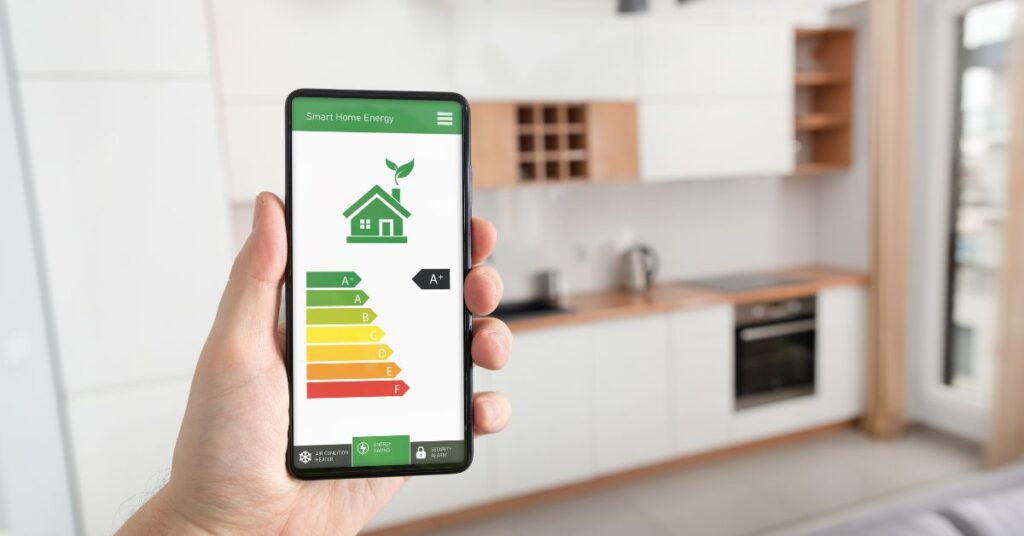
Energy-efficient appliances:
Embark on an energy-saving journey and discover the wonders of energy-efficient appliances! It’s time to make a conscious choice when purchasing new appliances and opt for models prioritizing energy efficiency. Embracing these appliances reduces our electricity consumption and contributes to a greener and more sustainable future. So, let’s dive in and explore the benefits of energy-efficient appliances and their impact on our everyday lives!
In our modern world, appliances play a significant role in our daily routines, from cooking meals to keeping our clothes clean and our homes comfortable. However, the energy consumption of these appliances can add up quickly, resulting in higher electricity bills and a larger carbon footprint. By choosing energy-efficient models, we can make a positive impact on both our wallets and the environment.
You are contemplating the purchase of a new refrigerator. Instead of opting for a conventional model, you choose an energy-efficient one with the Energy Star label. This decision ensures that your refrigerator operates with optimized energy consumption, saving you money on electricity bills and reducing greenhouse gas emissions. It’s a small but impactful choice that aligns your appliance purchase with your commitment to sustainability.
Energy-efficient appliances are designed to use less electricity while maintaining the same level of performance as their conventional counterparts. These appliances often incorporate innovative technologies and features that optimize energy usage, such as improved insulation, advanced sensors, and energy-saving modes.
You require a new washing machine. By choosing an energy-efficient model, you benefit from features like variable load sensing, which adjusts water and energy consumption based on the size of your laundry load. The machine may also include a high-speed spin cycle, reducing the time and energy required for drying. These innovative features save you time and money and minimize your environmental impact.
Energy-efficient refrigerators, dishwashers, and ovens are other appliances prioritizing energy conservation. These appliances utilize advanced technologies, such as smart sensors and improved insulation, to minimize energy waste and optimize performance.
If you’re in the market for a new dishwasher. By selecting an energy-efficient model, you benefit from efficient water jets, targeted spray patterns, and sensors that optimize water and energy usage. These technologies ensure your dishes are cleaned effectively, minimizing water and energy waste. By choosing an energy-efficient dishwasher, you enjoy a time-saving and convenient appliance and contribute to a more sustainable lifestyle.
It’s important to note that energy-efficient appliances save energy and offer long-term cost savings. While they may have a higher upfront cost than conventional models, their reduced energy consumption translates into significant savings on electricity bills over time.
You’re considering the purchase of a new air conditioner. Although an energy-efficient model may have a higher initial price tag, it provides substantial long-term savings. With advanced features like programmable settings, smart thermostats, and improved energy efficiency, the appliance consumes less electricity while maintaining a comfortable indoor climate. By choosing an energy-efficient air conditioner, you enjoy a cooler home and save money on your energy bills in the long run.
When purchasing energy-efficient appliances, looking for reputable energy labels and certifications, such as the Energy Star rating, is important. These labels indicate that the appliances meet strict energy efficiency criteria and have undergone rigorous testing and evaluation.
If shopping for a new television. As you browse the options, pay attention to the Energy Star label on specific models. This label assures you that the television meets stringent energy efficiency standards, ensuring reduced electricity consumption without compromising picture quality or performance. By selecting an Energy Star-certified TV, you make an informed choice that aligns with your commitment to energy conservation.
Choosing energy-efficient appliances reduces our electricity consumption, saves money, and contributes to a more sustainable future. Energy-efficient appliances positively impact the environment by reducing greenhouse gas emissions and minimizing the need for additional power generation.
You decide to replace your old water heater with an energy-efficient model. Doing so benefits you from improved insulation, advanced heating mechanisms, and programmable settings that optimize energy usage. With reduced energy consumption, your new water heater reduces greenhouse gas emissions and helps combat climate change. Choosing an energy-efficient water heater contributes to a greener and more sustainable future.
So, let’s make a conscious choice when purchasing new appliances and opt for energy-efficient models. Doing so reduces our electricity consumption, saves money on utility bills, and contributes to a more sustainable and energy-conscious lifestyle.
With the knowledge of energy-efficient appliances, confidently make informed decisions regarding your appliance purchases. Let your choices reflect your commitment to a greener and more sustainable future. Together, we can significantly reduce our energy consumption and create a more sustainable world.

Choose eco-friendly transportation:
Explore eco-friendly transportation options and make conscious choices that reduce our carbon footprint. By considering electric or hybrid vehicles and embracing carpooling, we can contribute to cleaner air, reduced emissions, and a greener future. So, fasten your seatbelts and embark on a journey toward eco-conscious transportation!
In our modern world, transportation plays a significant role in our daily lives. However, traditional gasoline-powered vehicles contribute to air pollution, greenhouse gas emissions, and climate change. By choosing eco-friendly transportation alternatives, we can reduce our environmental impact and create a healthier planet for future generations.
Practical Example: Imagine cruising down the street in an electric vehicle (EV). As you glide silently through the city, you can’t help but appreciate the clean air and the absence of engine noise. Choosing an electric vehicle eliminates tailpipe emissions, reduces carbon footprint, and improves air quality. It’s a powerful way to positively impact the environment while enjoying a smooth and sustainable ride.
Electric vehicles are an excellent choice for eco-friendly transportation. They run on electricity instead of gasoline, producing zero tailpipe emissions. Opting for an electric vehicle can significantly reduce our contribution to air pollution and greenhouse gas emissions.
In the market for a new car? Instead of choosing a conventional gasoline-powered vehicle, you decide to go electric. With an electric vehicle, you can charge it at home or public charging stations, eliminating the need for frequent trips to the gas station. By embracing electric transportation, you reduce your reliance on fossil fuels and enjoy the benefits of lower operating costs and a quieter driving experience.
Hybrid vehicles are another eco-friendly transportation option. They combine an internal combustion engine with an electric motor, offering improved fuel efficiency and reduced emissions compared to conventional vehicles.
Driving a hybrid car through city streets, you will notice how seamlessly the engine switches between gasoline and electric power, maximizing fuel efficiency and minimizing emissions. By driving a hybrid vehicle, you reduce your fuel consumption and lower your carbon footprint while enjoying the flexibility of a traditional car. It’s an innovative and sustainable choice that combines the best of both worlds.
In addition to choosing electric or hybrid vehicles, we can make a difference by embracing carpooling and ride-sharing. By sharing rides with others, we reduce the number of vehicles on the road, resulting in fewer emissions and less traffic congestion.
If you commute to work every day. Instead of driving alone, you carpool with your colleagues in the same area. By sharing the ride, you reduce fuel consumption and emissions and enjoy your co-workers’ company and camaraderie. Carpooling is a practical and social way to make your daily commute more sustainable and enjoyable.
Ride-sharing services, such as Uber and Lyft, also contribute to eco-friendly transportation by optimizing routes and reducing the number of empty cars on the road. By using these services, we can minimize our carbon footprint while still enjoying the convenience of private transportation.
Having a night out with friends. Instead of driving separate cars, you use a ride-sharing service to travel together. By pooling your resources and sharing the ride, you reduce emissions and make the evening more enjoyable and stress-free. It’s a win-win situation that demonstrates how simple choices can have a positive impact on the environment.
It’s important to note that eco-friendly transportation options extend beyond personal vehicles. Embracing public transportation, such as buses, trains, and trams, is another effective way to reduce emissions and promote sustainable mobility.
Heading downtown for a day of shopping and sightseeing. Instead of driving, you decide to take the train or bus. By choosing public transportation, you contribute to reduced traffic congestion, lower emissions, and improved air quality. It’s an eco-friendly and convenient option that allows you to sit back, relax, and enjoy the journey without the stress of driving and parking.
Active transportation, such as walking or biking, is another sustainable choice for shorter trips. We reduce emissions and improve our health and well-being using our muscle power.
See yourself biking to work or walking to the grocery store. As you breathe in the fresh air and feel the rhythm of your movements, you realize the double benefit of active transportation. By choosing to walk or bike, you reduce emissions, stay active, and connect more intimately with your surroundings. It’s a healthy, sustainable choice that invigorates your body and the environment.
So, let’s make conscious choices when it comes to transportation. By considering electric or hybrid vehicles, embracing carpooling and ride-sharing, and opting for public transit or active transport, we can reduce our carbon footprint and create a greener future.
Commit to eco-friendly transportation confidently and make sustainable choices in your daily travels. Let each journey be a step towards a cleaner, healthier, and more sustainable world.

Embrace natural light:
Bask in the beauty of natural light and brighten up your living spaces in the most sustainable way possible! It’s time to embrace the power of daylight and make it a prominent feature in your home. By opening curtains and blinds, you can maximize natural light, reduce your reliance on artificial lighting, and create a warm and inviting atmosphere. So, let the sunshine in, and let’s explore the wonders of embracing natural light!
Natural light has a magical quality that can transform any space. It illuminates our surroundings, uplifts our mood, and creates a sense of openness and connection to the outside world. Maximizing natural light in our homes can create a more sustainable and inviting environment.
Envision yourself standing in your living room, surrounded by large windows that let in abundant natural light. As the sun’s rays filter through, the room comes alive with a warm and vibrant glow. By embracing natural light, you not only enhance the beauty of your space but also reduce your energy consumption by minimizing the need for artificial lighting during the day.
Opening curtains and blinds is one of the simplest ways to make the most of natural light. Doing so allows sunlight to flood your rooms, illuminating every nook and cranny.
Practical Example: Imagine waking up in the morning and pulling back the curtains in your bedroom. As the room fills with soft, golden light, you feel a sense of calm and serenity over you. By starting your day with natural light, you set a positive tone and enjoy the benefits of a well-lit space without flipping a single switch.
When planning the layout and design of your living spaces, consider the positioning of windows and skylights to maximize the ingress of natural light. By strategically placing windows and incorporating skylights, you can bring in ample daylight, even in traditionally dim or enclosed areas.
You’re designing your dream kitchen. As you work with an architect or interior designer, you emphasize the importance of natural light. Together, you plan for large windows above the sink and a skylight above the central island, flooding the kitchen with abundant daylight. By incorporating these design elements, you create a bright and inviting space and reduce the need for artificial lighting during daytime hours.
In addition to opening curtains and blinds, consider using light-colored and reflective surfaces in your home. Light-colored walls, ceilings, and furniture help bounce natural light around the room, creating a brighter and more spacious feel.
Picture yourself in a cozy living room with light-colored walls and furniture. As sunlight streams through the windows, it reflects off the surfaces, enveloping the room in a warm and inviting glow. Choosing light colors and reflective materials enhances the natural light’s impact and makes your space feel open, airy, and energizing.
When natural light is insufficient, consider using task lighting or localized fixtures instead of relying on overhead lighting. This approach allows you to illuminate specific areas or tasks while making the most available natural light.
While sitting at your desk, working on a project. Instead of turning on the overhead light, you opt for a small desk lamp. By using localized lighting, you direct the light precisely where you need it, reducing energy consumption and creating a focused and comfortable working environment. This way, you can work efficiently without relying solely on artificial lighting.
In areas where privacy or glare is a concern, consider using translucent or sheer window coverings that allow natural light to filter through while providing a degree of privacy and control over direct sunlight.
Practical Example: Imagine sitting in your living room, enjoying a cup of tea and a good book. As the sun sets, you draw the sheer curtains, creating a gently diffused light that fills the room with a cozy ambiance. Using translucent window coverings, you balance privacy and natural light, creating a comfortable and inviting space.
Maximizing natural light reduces energy consumption and offers numerous health benefits. Exposure to natural light has been linked to improved mood, increased productivity, and better overall well-being.
You spend your mornings in a sunlit room, practicing yoga or engaging in meditation. As the natural light envelops you, you feel a sense of calm and rejuvenation. By embracing natural light in your daily rituals, you tap into its healing and energizing properties, enhancing your physical and mental well-being.
So, let’s open up those curtains and blinds and invite natural light to be a prominent feature in our lives. By embracing the power of daylight, we reduce our reliance on artificial lighting and create a warm, inviting atmosphere that enhances our well-being.
With the knowledge and appreciation for natural light, go confidently and infuse your living spaces with the beauty and warmth of the sun. Let every ray of natural light remind us of our connection to the natural world and our commitment to sustainable and harmonious living.

Participate in community recycling programs:
Join forces with your community and make a meaningful impact on waste management! By actively participating in local recycling initiatives and adequately sorting your waste, you can contribute to a more sustainable future, conserve resources, and reduce the amount of waste in landfills. So, let’s roll up our sleeves and explore the wonders of community recycling!
In our quest for a more sustainable lifestyle, recycling plays a crucial role in reducing the environmental impact of waste. While recycling efforts begin at home, community recycling programs offer a broader platform for individuals, businesses, and local authorities to create an efficient and effective waste management system.
Walking through your neighborhood on recycling day. You witness a flurry of activity as households put out recycling bins filled with carefully sorted materials. The sound of recycling trucks hums in the background, ready to collect and transport the recyclables to the appropriate processing facilities. By actively participating in community recycling programs, you join your neighbors in a collective effort to reduce waste, conserve resources, and protect the environment.
The first step in participating in community recycling programs is to familiarize yourself with your local area’s specific recycling guidelines and initiatives. Find out what materials are accepted for recycling, how they should be sorted, and the designated collection days or drop-off locations.
You’re new to a neighborhood and want to start recycling. Contact your local waste management authority or visit the website for information about recycling programs. You learn about the types of materials that can be recycled, such as paper, plastic, glass, and metal, as well as any specific guidelines for sorting or preparing recyclables. With this knowledge, you can actively participate in your community’s recycling efforts.
Once you understand the recycling guidelines, sorting your waste correctly is essential. Set up designated recycling bins or containers in your home to separate recyclable materials from non-recyclable ones. This ensures that the recyclables can be easily identified and collected for processing.
Picture yourself in your kitchen, where you’ve set up separate bins for recyclables and non-recyclables. As you go about your daily routine, you instinctively sort your waste, placing paper, plastic, glass, and metal items in the recycling bin while disposing of non-recyclable waste in the appropriate trash bin. By sorting your waste at the source, you create a streamlined process that simplifies recycling and reduces contamination.
To make recycling even more efficient, familiarize yourself with additional local recycling initiatives, such as curbside pickup programs, drop-off centers, or special collection events for specific items like electronics or hazardous materials.
If you have an old computer that you no longer use. Instead of throwing it away, you find out that your community organizes an electronic waste recycling event twice a year. You mark your calendar, gather your old electronics, and drop these off at the designated location on the scheduled day. Taking advantage of such initiatives ensures that these items are properly recycled and don’t end up in landfills, where they can pose environmental hazards.
Active participation in community recycling programs extends beyond sorting and disposing of recyclables. It also involves staying informed about updates and changes in recycling guidelines and engaging in educational initiatives and community events related to waste reduction and recycling.
You are attending a recycling workshop organized by your local waste management authority. You learn about new recycling technologies, best practices for waste reduction, and innovative approaches to recycling in your community. You walk away inspired and equipped with the knowledge to make more informed recycling decisions. By engaging in such educational initiatives, you become an advocate for recycling in your community and inspire others to join in the effort.
Remember, community recycling programs rely on individuals’ and businesses’ active participation and collective effort. Encourage your neighbors, friends, and local organizations to join you in recycling initiatives and spread awareness about the importance of responsible waste management.
You organize a neighborhood recycling drive where everyone collects and delivers recyclables to the designated collection point. The event sparks conversations, fosters community, and strengthens the commitment to recycling. You create a collective impact that transcends individual efforts by rallying your neighbors and engaging them in recycling activities.
Participating in community recycling programs contributes to a more sustainable future by conserving resources, reducing landfill waste, and promoting responsible waste management practices. Your active involvement benefits the environment and inspires others to take action and make a positive difference.
So, let’s embrace community recycling programs and become agents of change in our neighborhoods. By familiarizing ourselves with local recycling initiatives, sorting our waste correctly, participating in educational initiatives, and engaging others in recycling efforts, we can create a cleaner and greener world for future generations.
With your knowledge and commitment to community recycling, go confidently and make recycling a way of life. Let every act of recycling be a testament to our dedication to sustainability and our shared responsibility to protect the planet.

Reduce plastic packaging:
Rethink our choices and opt for products with minimal or plastic-free packaging. By making conscious decisions, we can minimize our contribution to the global plastic waste problem, conserve resources, and create a cleaner and greener planet. So, let’s explore the wonders of reducing plastic packaging and positively impacting our environment!
In our modern world, packaging plays a significant role in our daily lives. From groceries to household products, we encounter various types of packaging, with plastic being one of the most prevalent and problematic materials. By choosing products with minimal or plastic-free packaging, we can tackle the issue of plastic waste head-on.
Practical Example: Imagine strolling through the aisles of a grocery store, carefully selecting items for your shopping cart. As you reach for a product, you notice it comes in minimal or plastic-free packaging. The sight brings a smile to your face as you realize that by choosing such products, you’re taking a step towards reducing plastic waste and promoting a more sustainable lifestyle.
One way to reduce plastic packaging is by choosing products that come in minimal or eco-friendly packaging alternatives. Look for items packaged in paper, cardboard, glass, or metal, which have lower environmental impacts and are often more easily recyclable or reusable.
You’re shopping for personal care products like shampoo and soap. Instead of selecting items in plastic bottles, you choose shampoo bars packaged in recyclable cardboard or soap bars wrapped in paper. These minimal packaging options reduce plastic waste and support brands prioritizing sustainability.
Another approach to reducing plastic packaging is by embracing refillable and reusable options. Look for products that offer refill stations or bulk options, allowing you to replenish your supplies without needing single-use plastic containers.
You are at a grocery store where you find a refill station for household cleaning products. You bring empty containers and fill them with your preferred cleaning solutions, avoiding purchasing new plastic bottles each time. By embracing refillable options, you minimize plastic waste and create a more sustainable cleaning routine.
Additionally, consider buying fresh produce, grains, and other food items from local markets or bulk stores. These establishments often offer the opportunity to bring your own containers and bags, allowing you to bypass unnecessary plastic packaging.
Visit a local farmer’s market and fill your cloth produce bags with fresh fruits and vegetables. As you make your purchases, you appreciate the absence of plastic bags and the ability to directly transfer your produce to your reusable shopping bag. By choosing local markets and bulk stores, you support a more sustainable food system and reduce plastic waste.
When it comes to online shopping, pay attention to the packaging practices of the retailers you support. Look for those who prioritize sustainable packaging materials, minimize the use of unnecessary plastic, and use recycled or recyclable materials whenever possible.
Let’s say you’re ordering a new item online. Before making the purchase, you research the retailer’s packaging practices and find that they use minimal plastic and prioritize eco-friendly materials. This gives you the confidence to proceed with the purchase, knowing that the packaging aligns with your commitment to reducing plastic waste.
To further reduce plastic packaging, consider making homemade alternatives for commonly used products. By creating your own cleaning solutions, personal care items, or even food items, you have control over the ingredients and packaging, reducing your reliance on store-bought products packaged in plastic.
Making your own natural household cleaning spray using simple ingredients like vinegar, water, and essential oils. You store the solution in a reusable glass bottle, eliminating the need for multiple plastic spray bottles. By embracing homemade alternatives, you reduce plastic waste and gain a sense of creativity and empowerment in your everyday life.
By actively choosing products with minimal or plastic-free packaging, we clearly message manufacturers and retailers that sustainability is important to us as consumers. This encourages them to explore innovative packaging solutions and invest in more sustainable practices.
Say you consistently choose products with minimal or plastic-free packaging, and over time, you notice an increasing number of options available in the market. This shift reflects the impact of consumer choices and demonstrates that businesses are responding to the demand for sustainable packaging. By supporting these brands and spreading awareness, you contribute to the larger movement toward reducing plastic waste.
Reducing plastic packaging not only helps to conserve resources but also contributes to the prevention of plastic pollution, which poses a severe threat to our environment and wildlife. We can collectively significantly impact the global plastic waste problem by making conscious choices.
Imagine walking along a pristine beach, appreciating the natural beauty around you. As you observe the waves rolling onto the shore, you’re grateful for your commitment to reducing plastic packaging. By choosing minimal or plastic-free packaging, you’ve played a part in preventing plastic waste from entering our oceans and harming marine life. Your choices have contributed to a cleaner and healthier ecosystem.
So, let’s make conscious decisions regarding packaging and choose products with minimal or plastic-free packaging. By doing so, we reduce plastic waste, support sustainable brands, and inspire others to follow suit.
Armed with knowledge and commitment to reducing plastic packaging, go with confidence and make a positive impact on our environment. Let every purchase be a step towards a plastic-free future, where packaging aligns with our commitment to sustainability and the well-being of our planet.

Hang-dry your laundry:
Let the sunshine work its magic on your laundry! It’s time to embrace the age-old practice of hang-drying and reap the benefits of air-dried clothes. By taking advantage of sunny days and opting for line drying instead of a dryer, you can save energy, reduce your carbon footprint, and enjoy the fresh scent of naturally dried garments. So, grab your clothespins, and let’s explore the wonders of hang-drying!
In our fast-paced world, the convenience of a clothes dryer often takes center stage in our laundry routines. However, by reverting to the traditional method of hang-drying, we can tap into the sun’s power, save energy, and positively impact our environment.
Envision yourself in your backyard, hanging freshly washed clothes on a clothesline. As you secure each garment with a clothespin, you can’t help but appreciate the gentle breeze and warm sunlight that envelops your surroundings. By choosing to hang-dry your laundry, you not only reduce your energy consumption but also connect with nature in a meaningful way.
One of the most significant advantages of hang-drying your laundry is energy savings. Clothes dryers consume considerable electricity, contributing to your household’s energy usage and carbon footprint. Opting for line drying can significantly reduce your energy consumption and environmental impact.
You typically use a clothes dryer to dry your laundry. However, on a sunny day, you decide to hang your clothes outside instead. Doing so eliminates the energy usage associated with running the dryer, effectively reducing your electricity consumption and lowering your monthly energy bills. It’s a simple yet impactful choice that aligns with your commitment to sustainability.
Hang-drying also helps to preserve the quality and lifespan of your clothes. The gentle air-drying process minimizes the wear and tear in the dryer, extending the life of your garments and reducing the need for frequent replacements.
You have a favorite shirt that you wear regularly. You hang it to dry instead of subjecting it to a dryer’s high heat and tumbling. The gentle air-drying method prevents shrinkage, fading, and potential damage caused by the dryer’s heat. By hang-drying your clothes, you preserve their quality and save money by reducing the frequency of new purchases.
Hang-drying is often preferred for delicate fabrics and clothing items requiring special care. Delicate garments, such as lingerie, silk, or wool, can be vulnerable to a dryer’s high heat and agitation. Air-drying these items ensures they retain their shape, color, and overall integrity.
Let’s say you have a beautiful silk dress you want to wear for a special occasion. Instead of risking damage in the dryer, you carefully hang it to dry, allowing the natural airflow to gently caress the fabric. By hang-dry delicate items, you maintain their beauty and longevity, avoiding the disappointment of ruined garments.
Hang-drying your laundry also offers a natural freshness that a dryer cannot replicate. The gentle breeze and sunlight infuse your clothes with a pleasant scent, leaving them smelling clean and revitalized.
Picture yourself grabbing a freshly dried towel from the clothesline. As you bring it to your face, you’re greeted with the crisp scent of sun-kissed fabric. By air-drying your laundry, you embrace the natural freshness that comes with line drying, transforming a simple household chore into a sensorial experience.
In addition to outdoor clotheslines, there are various indoor options for hang-drying your laundry, especially during colder or rainy seasons. You can utilize drying racks and clotheslines in basements or laundry rooms or even invest in retractable clotheslines that can be installed discreetly in any room.
It’s a rainy day, and you cannot hang your laundry outside. Instead, you set up a drying rack in your laundry room and hang your clothes to dry indoors. By utilizing indoor drying options, you maintain the benefits of line drying even when the weather doesn’t cooperate. It’s a versatile and convenient approach that allows you to continue air-drying your laundry throughout the year.
Hang-drying your laundry is eco-friendly and a mindful and meditative process. Taking the time to hang each garment and watch them sway gently in the breeze can be a peaceful and calming activity, providing respite in our busy lives.
Standing in your backyard, surrounded by the colorful array of clothes on the line. As you secure each garment, you find solace in the simplicity of the task and the connection to nature. By embracing hang-drying, you reduce your environmental impact and create a mindful and reflective moment in your day.
By opting for hang-drying, you contribute to a more sustainable lifestyle by conserving energy, reducing greenhouse gas emissions, and minimizing your reliance on appliances. This simple change in your laundry routine can significantly impact the environment and inspire others to follow suit.
Let’s say your neighbors notice your commitment to hang-drying your laundry and are inspired to do the same. Soon, you see more clotheslines popping up in the neighborhood as others recognize the benefits of line drying. By sharing your practices and inspiring those around you, you become an agent of change and contribute to a more sustainable community.
So, let’s embrace the age-old practice of hang-drying and reap the rewards of air-dried clothes. By taking advantage of sunny days and opting for line drying, we save energy, reduce our carbon footprint, and enjoy the simple pleasures of nature’s touch on our laundry.
With your knowledge and appreciation for hang-drying, go confidently and let your clothes dance in the breeze. Let every line-dried garment be a testament to your commitment to sustainability and your dedication to a greener and more mindful way of living.

Spread the word:
Ignite a sustainability revolution and inspire others to embark on their own sustainable living journeys! It’s time to spread the word and share your experiences, knowledge, and passion for eco-friendly habits. Engaging in conversations, sharing practical tips, and leading by example can create a ripple effect of positive change, empowering others to embrace sustainable living. So, let’s dive into the advocacy world and discover how you can become a catalyst for a greener and more sustainable future!
Living a sustainable lifestyle is not just about making individual changes; it’s about creating a collective movement toward a more eco-conscious society. By sharing your sustainable living journey with others, you have the power to inspire and educate, sparking conversations and planting seeds of change in the minds of those around you.
Imagine sitting with friends at a coffee shop, sharing stories of your sustainable living practices. As you passionately discuss the impact of small changes and the benefits you’ve experienced, you notice the spark of curiosity and interest in their eyes. By opening up about your sustainable living journey, you initiate a conversation that can lead to transformative actions and inspire others to make positive changes.
Personal storytelling is one of the most effective ways to spread the word about sustainable living. Share your own experiences, challenges, and triumphs, highlighting the positive impacts of eco-friendly habits and lifestyle choices. By weaving a narrative around your sustainable journey, you create a relatable and engaging description that captures people’s attention and sparks their curiosity.
You’ve transitioned to a plant-based diet and experienced numerous health and environmental benefits. You share your story with friends, family, and even on social media platforms. Through your personal storytelling, you paint a vivid picture of your journey, describing the delicious plant-based meals you’ve enjoyed, the improved well-being you’ve experienced, and the positive impact on the planet. This narrative approach engages others emotionally, making sustainable living relatable and inspiring.
Another powerful tool for spreading the word about sustainable living is social media. Leverage platforms like Instagram, Facebook, or Twitter to share educational content, practical tips, and inspiring visuals that showcase the beauty and benefits of sustainable living. Use hashtags and engage with relevant communities to expand your reach and connect with like-minded individuals.
Scrolling through your social media feed and coming across a beautifully curated Instagram account dedicated to sustainable living. The account owner shares stunning photos of their zero-waste lifestyle, eco-friendly products, and sustainable fashion choices, with insightful captions and practical tips. By following and engaging with such accounts, you immerse yourself in a community of individuals passionate about sustainable living and gain inspiration for your journey.
In addition to personal storytelling and social media, consider organizing or participating in sustainability-focused events in your community. This could range from workshops and presentations to clothing swaps and eco-fairs. You create a space for knowledge-sharing, collaboration, and collective action by engaging with others in person.
You organize a sustainable living workshop in your neighborhood. You invite guest speakers who are experts in various aspects of sustainability, such as zero waste, renewable energy, or ethical fashion. Community members attend the workshop, eager to learn and be inspired. Through interactive discussions, hands-on activities, and practical demonstrations, you foster a sense of empowerment and equip attendees with actionable steps to incorporate sustainable practices into their lives.
Remember, leading by example is one of the most powerful ways to inspire others. Showcasing your commitment to sustainable living through your actions, habits, and choices can profoundly impact those around you. Whether it’s through composting, reusable products, or reducing waste, your everyday choices can be a beacon of inspiration and encouragement.
Your neighbor observes how you diligently sort your waste, compost your food scraps, and use reusable bags when grocery shopping. They witness your commitment and see its positive impact on your life and the environment. Intrigued by your actions, they approach you and express interest in adopting similar practices. Leading by example inspires others to take their first steps towards sustainable living.
Engaging in conversations about sustainable living requires empathy, active listening, and the ability to address questions and concerns with confidence and clarity. Be open to discussing the benefits, challenges, and misconceptions surrounding sustainable living, and provide practical tips and resources to support others on their journeys.
Let’s say a friend approaches you with skepticism about the effectiveness of sustainable living practices. Instead of dismissing their concerns, you converse thoughtfully, addressing their doubts and sharing evidence-backed information. You provide practical examples of sustainable choices they can make, such as using a reusable water bottle or reducing food waste. You create a safe and supportive space for learning and growth by patiently addressing their concerns and offering practical solutions.
Lastly, collaboration is vital in spreading the word about sustainable living. Seek opportunities to collaborate with local organizations, schools, businesses, or community groups with similar values. By joining forces, you can amplify your message, reach a wider audience, and create a more significant impact.
Partnering with a local school to deliver a presentation on sustainable living to students. You share engaging visuals, interactive activities, and practical tips that resonate with young minds. By collaborating with the school, you reach a large number of students who can take the knowledge and inspiration they gain back to their homes and communities. This collaborative effort ensures a ripple effect of change beyond your immediate circle.
So, let’s spread the word and inspire others to embrace sustainable living. By sharing your personal journey, leveraging social media, organizing events, leading by example, engaging in conversations, and collaborating with others, you become a catalyst for positive change.
Now, armed with your passion and knowledge, go forth with confidence and ignite the sustainability flame in others. Let every conversation be an opportunity to plant seeds of change and empower others to join the movement toward a greener and more sustainable future.

That’s A Wrap
Incorporating sustainable life hacks into your daily routine can make a significant difference in reducing your environmental impact. By implementing these 25 simple and practical tips, you can contribute to a greener future while enjoying the benefits of a more sustainable lifestyle. Let’s make conscious choices and work towards a more sustainable and eco-friendly world.

